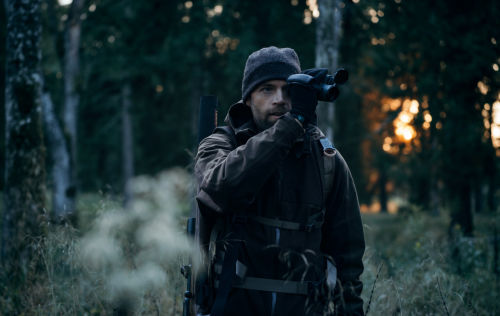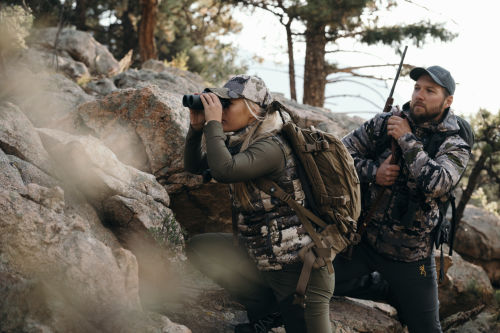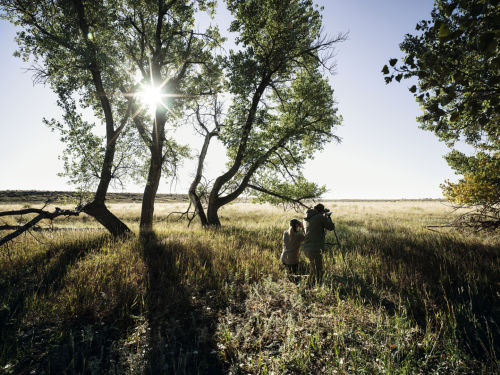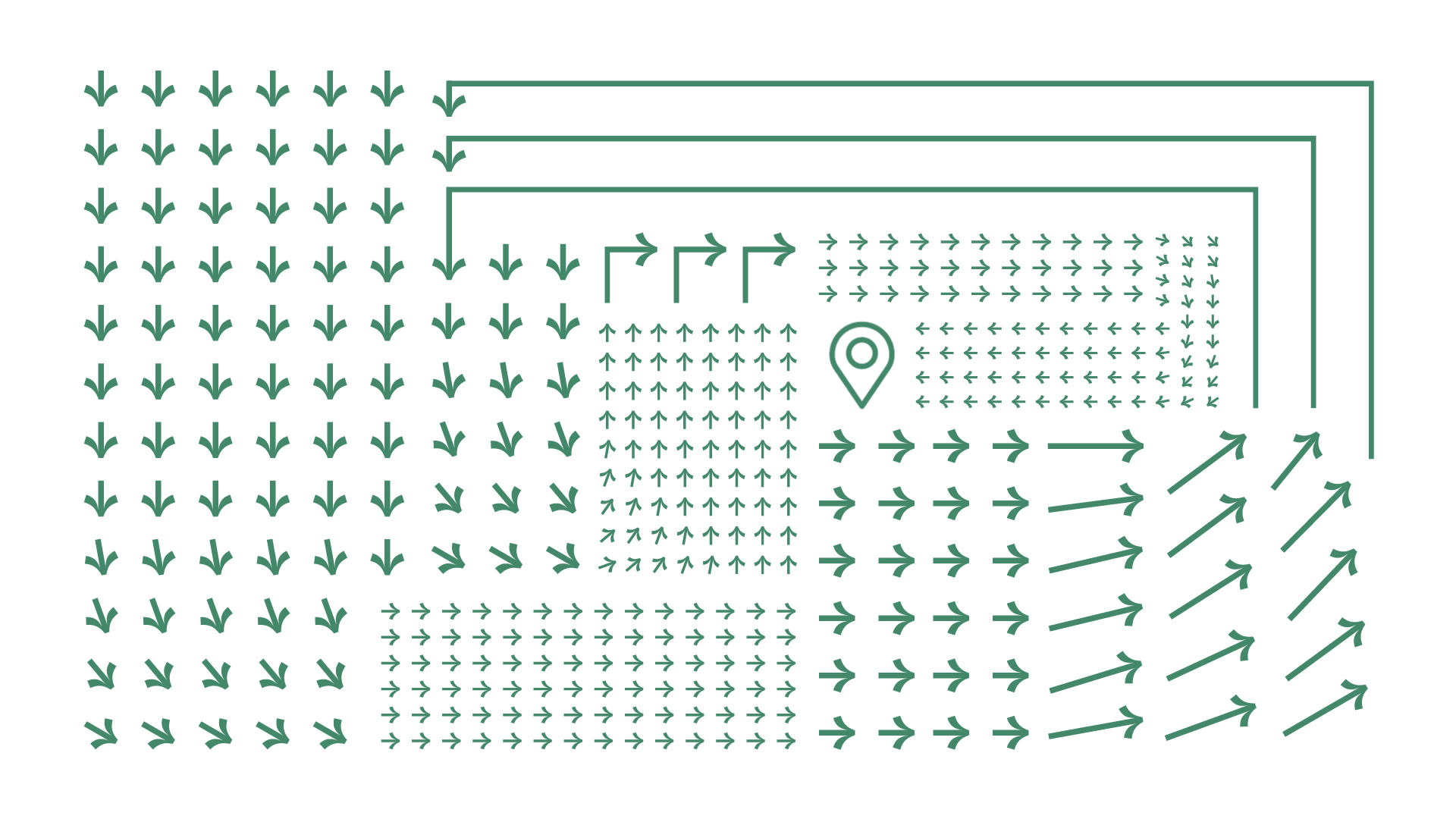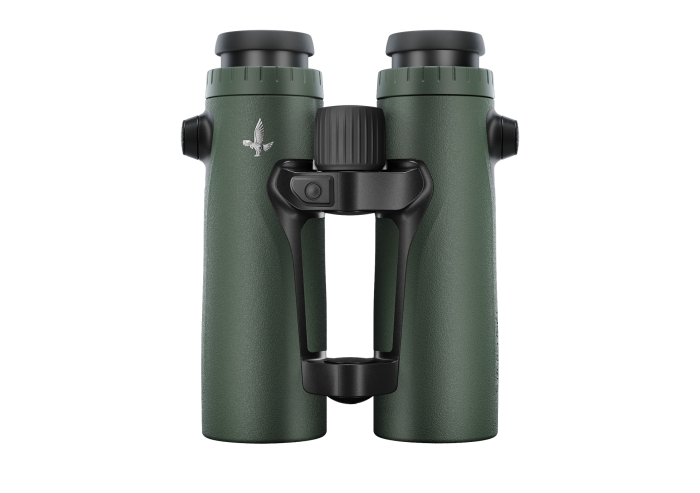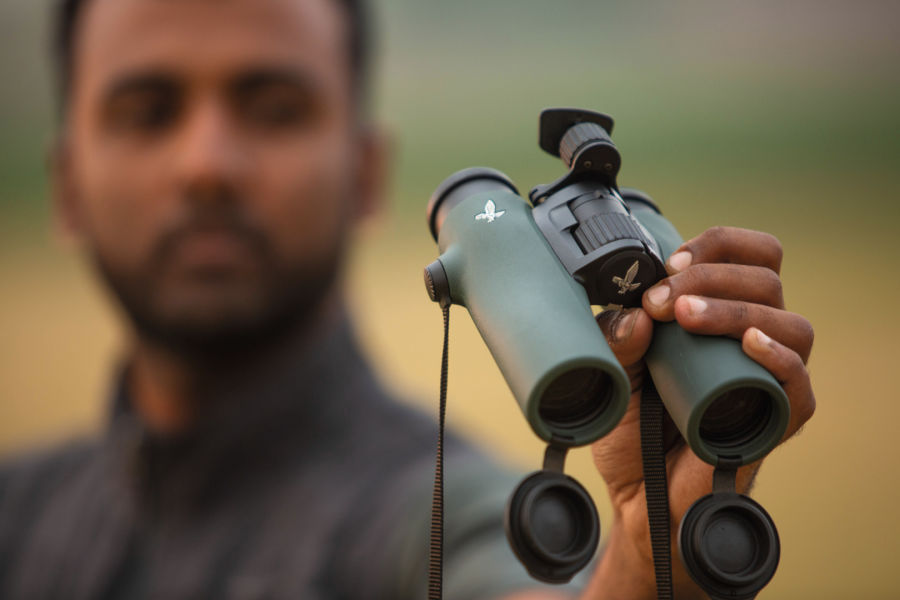People are born. But how do they then find their way in the world? What gives them security, the assurance that they won’t stray from the path, both literally and figuratively?
To answer these questions, people spend their entire life – consciously or unconsciously – striving to understand, research, and describe themselves and everything around them. But to quote Goethe:
We need direction to survive.
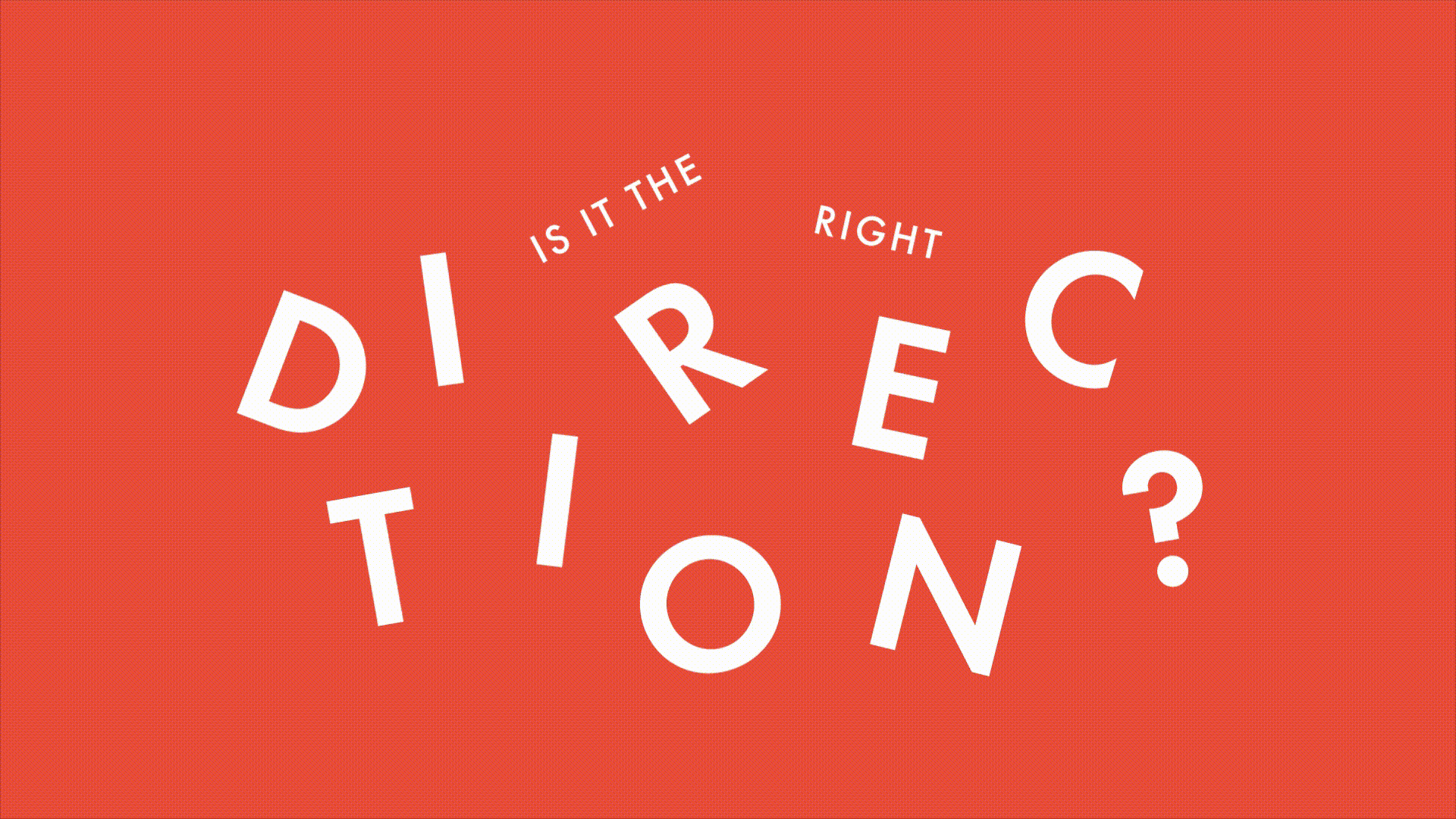
An example:
Imagine that someone is trying to find their way in an expanse of flat terrain, with no landmarks to guide them. They are feeling slightly lost and disorientated. Think how much more quickly they would reach their destination if someone described the route to them “Go right” or “head south”. Or gave them some valuable advice: “Don’t wait until it gets dark, that’s when it’s dangerous!” The person sends a quick prayer up to heaven, which always helps them in this kind of tricky situation, checks their watch and the position of the sun in the sky, and then sets out toward the south.
Even this little imaginary scenario illustrates the many different levels of “orientation.” We usually tend to think of “spatial orientation,” i.e. the ability to get our bearings in a space and progress accordingly, for example “head south.”
“Chronological orientation,” on the other hand, refers to time contexts, such as the date or part of the day. For example, “before it gets dark.” From a spiritual perspective, faith can provide direction for life. Consider, for example, our lost person hoping for divine intervention. Scientific, biological, political, artistic, moral, ethical, or philosophical components can also play a role.
It is possible to have, give, seek, or find direction. SWAROVSKI OPTIK considers an aspect that people tend to contemplate mainly when they lose their way.

Having direction
“There’s a bee on your western arm!” Most of us would find this sentence odd. This is because we are accustomed to thinking of spatial orientation in the categories of “right, left, up, down, front, behind.” However, this is in contrast to indigenous peoples who use cardinal points for orientation. In the case of “egocentric orientation,” objects are always viewed in relation to our own body. Which often gives rise to a need for further clarification: “on my left or yours?” The use of cardinal points renders this question superfluous. Studies have shown that people who use systems based on cardinal points – such as the Guugu Yimithirr, an Australian Aboriginal people – have a far better inherent sense of direction. They have a kind of “internal compass” that allows them to immediately find their way in unfamiliar environments. It is thought that spatial orientation using cardinal points is evolutionary while egocentric orientation is cultural and learned. This would also explain why so many people (estimated at 20 to 30 percent) find it difficult to differentiate between left and right. This can potentially even have disastrous consequences, for example medical errors or traffic accidents.
Did you know?
The Tracking Assistant integrated in the EL Range provides orientation in difficult terrain or challenging situations and makes it far easier to find the target area. This allows you to quickly and confidently navigate straight to your last measuring point and find the place where your shot hit the target.

SPATIAL ORIENTATION
Giving direction
Studies such as that by educational psychologist Stefan Münzer show that the use of navigation systems increasingly weakens spatial orientation. Using a road map establishes the correct outlook, i.e. pointing north, and comparing this with your own position then provides a good overview. However, with a navigation system, a device takes over this important function and the display is egocentric. If we use a map to help plan our route, we can develop a spatial understanding of our surroundings and train our sense of direction. We create a kind of “mental road map” in our head, giving us both an overview as well as knowledge of the route. To avoid completely losing this skill through use of digital navigation systems, users are recommended to at least select a larger display section on the navigation device as this also helps to create a “mental map.”
Of course, people rely on more than purely visual elements for direction. One impressive example of acoustic orientation is blind people trained in echolocation, who generally have great expertise in this skill. They use click sonar, a discreet clicking sound using their tongue, to determine the location, density, and size of objects based on their different echoes. This allows echolocation-skilled blind people to lead a mostly independent life. Smell also provides orientation, a sense that we often tend to underestimate. As well as visual and acoustic landmarks, our brain also stores olfactory memories in the hippocampus, which helps us get our bearings. To a greater extent than all other sensory impressions, these stir memories, such as “this smells like my old nursery school,” even if the original events are decades in the past.
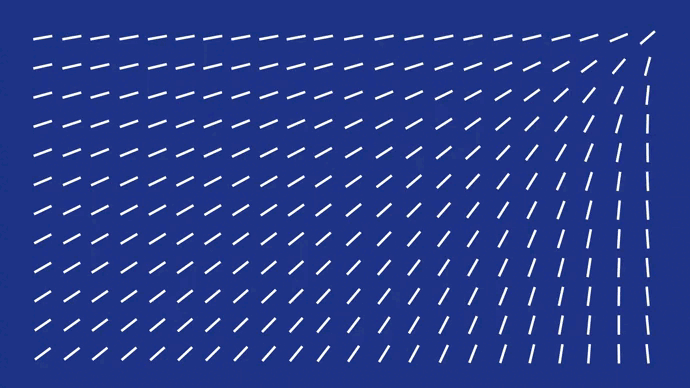
ANIMAL ORIENTATION
A lot of animals, such as bears, elephants, eels, and domestic pets like dogs and cats, have a clear advantage when it comes to olfactory orientation. As demonstrated by the thousands of miles that many animals walk, swim, or fly without getting lost. Migratory birds, in particular, demonstrate their amazing navigational prowess each year. While their tools are surprisingly similar, their skills are far superior to those of humans. Different species of birds also navigate in different ways: Starlings and many other related species use the sun for direction, while the night-flying Indigo Bunting uses the moon. The earth’s magnetic field, perceived by animals using a magnetic sense, is especially important. Animals use this for accurate navigation, registering both its direction and strength and storing this information in a kind of “internal magnetic field map,” which they can refer to like a compass on their flight routes. However, the precise location of this magnetic sense in birds is not yet clear.
Seeking direction
As well as scientific “hard facts,” factors that cannot be objectively quantified or measured play a very important role too. While from a purely practical perspective, direction involves a simple “left or right,” at the other end of the scale, this study inevitably leads to one of the big questions of our existence: what is our direction in life? Religion, philosophy, and ethics contemplate this question. Self-help books and advice programs also attempt to guide our path and the direction we should follow.


It can sometimes be very easy to suddenly lose your bearings. With the big questions in life in particular, direction is never entirely certain. Orientation is an issue that stays with us throughout our entire life.
